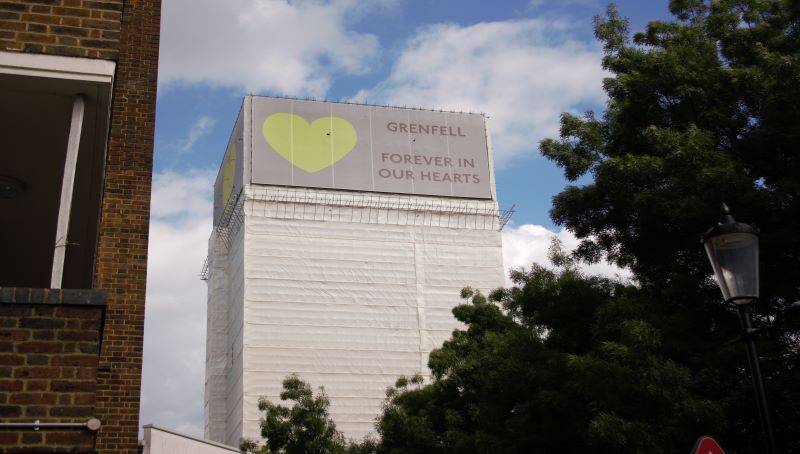
By Colin Wiles, housing consultant.
Fifty years from now, when historians look back at current housing policy, I am fairly certain the cladding and building safety crisis will be regarded as one of the most horrific and egregious scandals of our time.
My latest contribution to this topic is a report for the Intergenerational Foundation (The Cladding Scandal: A crisis for younger people) highlighting the fact the crisis has had a disproportionate impact upon younger generations.
This is not to minimise the damage caused by the crisis across all age groups, but the evidence of intergenerational unfairness is fairly stark. Younger people are more likely to buy newbuilds, more likely to buy flats – especially high-rise flats – and more likely to have used government-backed house purchase schemes such as Help to Buy or shared ownership.
These schemes have consistently lured younger people into buying newbuilds rather than existing homes, and often pushed up house prices in the process.
Take Help to Buy: 328,506 properties were bought in England between 2014 and 2021 using this scheme, with an average property price of £277,800. Almost one in five were flats; two-thirds of purchasers had an annual household income of less than £80,000; and 82% of purchasers were first-time buyers, so more likely to be younger people.
This also means that younger people have been more likely to be affected by all the knock-on stresses and strains of the building safety crisis, including bankruptcy and mental health impacts. When you read some of the comments made by the victims of the crisis, it really is heart-breaking.
To date, the government has come up with only a fraction of the cash needed to fix all the problems, about £5bn in total. The House of Commons Communities and Local Government Select Committee calculated that £15bn would be required to fix the crisis. Colmore Tang Construction suggests the cost is closer to £50bn.
Michael Gove’s latest wheeze to add another £4bn to this pot directly from developers appears to be falling apart, with talk of legal challenges in the air and “judicial review after judicial review” being launched.
To be fair to the housebuilders, you can understand why they might baulk at this extra tax burden, despite their excessive profits. They did not write the Building Regulations and they did not manage the testing regime for the materials they used on their newbuilds.
The most recent shocking revelations, published in Inside Housing, show that the Building Research Establishment carried out testing on aluminium composite material panels in 2001 and that they performed catastrophically badly compared to other materials, with flames jumping 20 metres after just five minutes.
Yet ACM panels were still given a class 0 classification under the Building Regulations, which allowed them to be affixed to tall buildings. (ACM panels were the primary cause of the Grenfell Tower fire spreading so quickly).
The government wrote the rules and authorised the use of these lethal products, so surely the government should put things right?
This leaves poor leaseholders stuck in the middle, between government, insurers and builders. Just think about this for a moment. We have a situation where buyers of a fridge or smartphone have more protection than a buyer making the most critical purchase of their life – a home.
The vast majority of those buying a new-build property under Help to Buy or shared ownership will have found a flat, read all the developer’s persuasive sales blurb, taken out a mortgage from a lender who sees the property as a sound investment, arranged a survey from a qualified surveyor who gives the all clear (subject to the usual caveats), and the developer then provides a warranty from the NHBC or another insurer that shields the property against defects in workmanship and materials for perhaps ten years.
Of course, the average buyer has no idea what is behind the walls or beneath the floorboards, or what material the external walls are made of, but surely all these professional voices – lenders, builder, surveyors, insurance companies – know what they are doing and can give you the reassurance you seek? They are trustworthy right?
Not so. A few years down the line you find you live in an unsafe building and despite all these assurances it is you that is left facing a hefty bill to put everything right. You cannot sell or re-mortgage your home, move to another job or live a normal life.
Another report last week by End our Cladding Scandal looks specifically at housing association leaseholders. There were 352 responses from 35 housing association landlords, and over nine in ten respondents said that the crisis had impacted their mental health.
Over a third said they would have to find more than £50,000 to deal with defects in their flats. But the report also highlights the appalling and shameful treatment received at the hands of housing association landlords.
Nine in ten respondents gave a negative rating to their landlord’s communication and customer service. One in five said they had been prescribed medication or had taken time off work as a result of the stress and anxiety involved.
There appeared to be no consistency between landlords over what was being charged for, with over a third of respondents being charged for interim remediation costs.
Some landlords were charging 100% of remediation works; others were only charging according to the share of the equity owned by the leaseholder. In short, something of a dog’s dinner and not a good look for the reputation of our sector.
Housing associations should be coming together to produce a more unified and compassionate response to their residents who are suffering from this wider crisis. If they will not do it, then the regulator should be forcing them to do it.
When the historians write the story of this shameful episode 50 years from now, it would at least be a comfort to know that our sector did the right thing.





